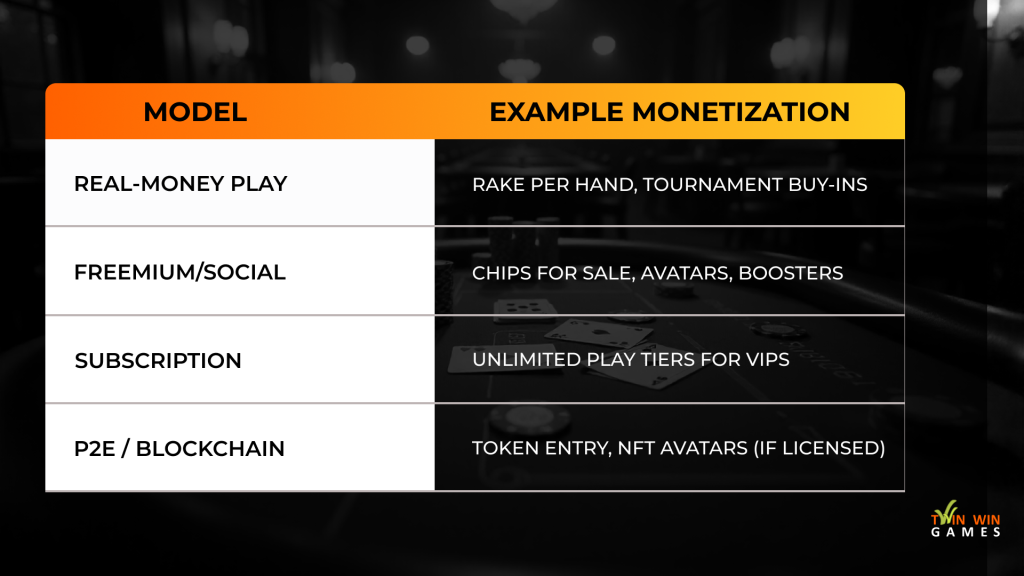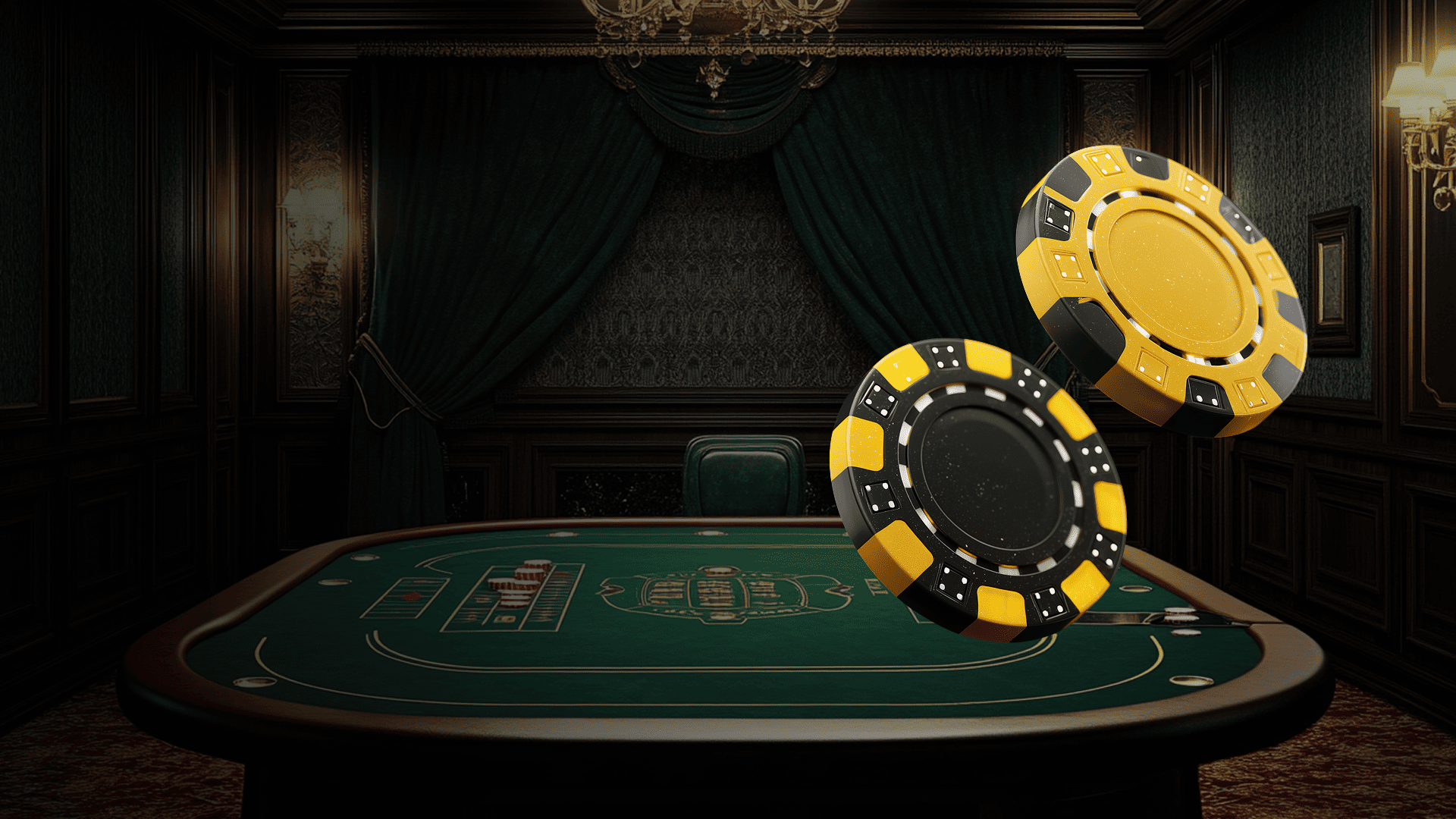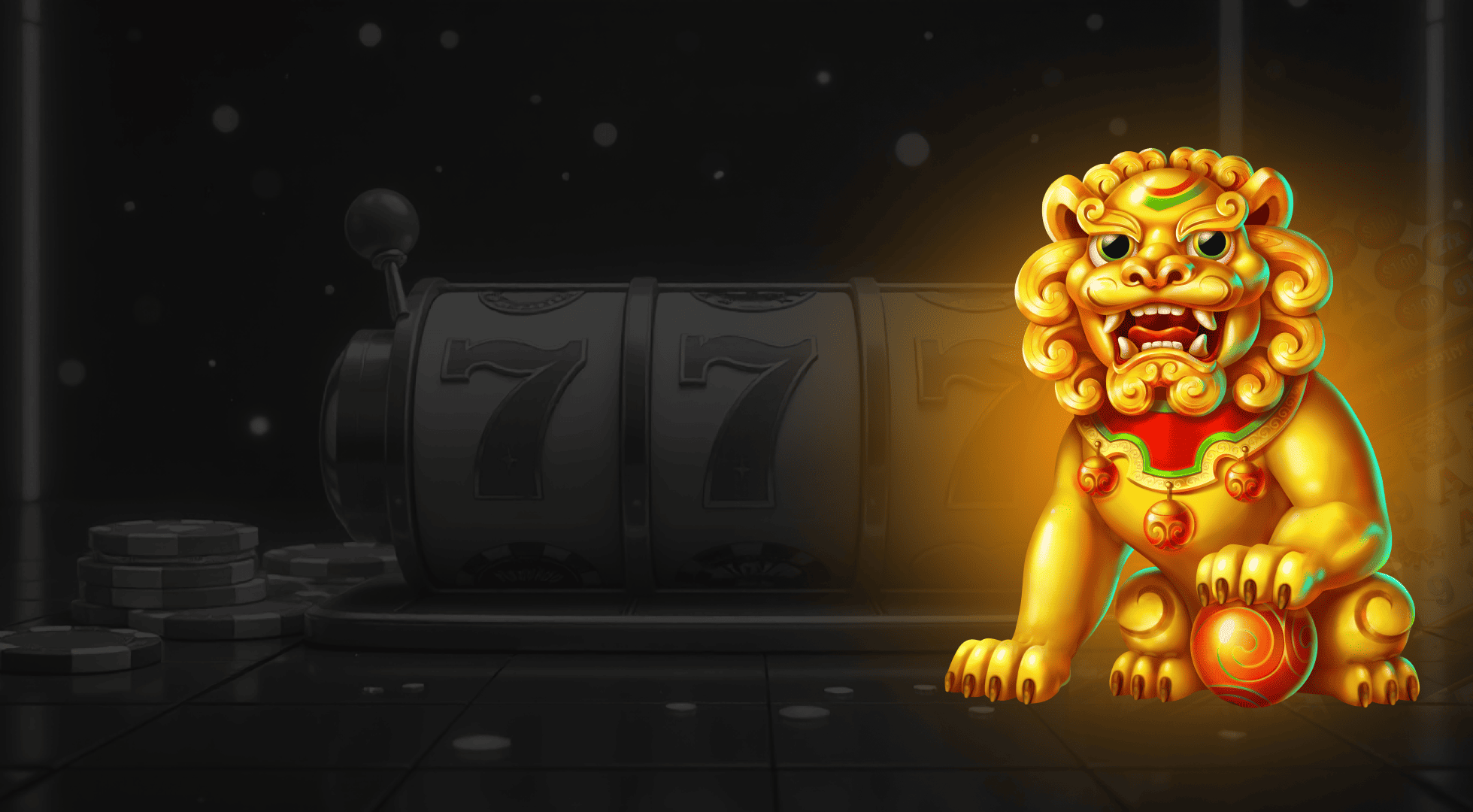This guide walks you through every critical step of poker game development. From choosing the right real-time engine and calculating licensing costs to hiring a lean, eight-person team that can ship an MVP in under nine months. You’ll discover:
- Market validation tips that prove demand before you write a single line of code.
- A tech stack checklist (Unity, Photon, PostgreSQL, AWS) trusted by top-grossing card apps.
- Budget benchmarks and salary ranges so you can forecast CAPEX and OPEX with confidence.
- Monetization models. Real-money, freemium, subscription, or Web-3, that match your target regions.
- A sprint-by-sprint roadmap covering prototype, compliance, soft-launch, and global rollout.
Product owners, PMs, and investors alike will walk away with a punch-list: who to hire, which tools to load up, and exactly when to fire each sprint to turn a poker concept into a revenue engine.
1. Why Build a Poker Game Today?
Online poker occupies a unique sweet‑spot in the games industry. It blends the evergreen appeal of card games with the excitement of real‑time competition and when your jurisdiction allows, the thrill of real‑money stakes.
According to Custom Market Insights, the online-poker market is on a steep climb—forecast to expand at a 15.2 % CAGR between 2025 and 2034, jumping from USD 6.27 billion in 2025 to USD 22.36 billion by 2034.
With mobile play already dominating hand volume and new technologies (AI opponents, VR tables) improving session quality, there’s still ample runway for fresh entrants—as long as they can navigate the genre’s strict technical and regulatory checkpoints.

Key Opportunity Drivers
- Mobile‑first behaviour – Two‑thirds of hands are already played on pocket devices.
- Hybrid economies – Play‑money titles monetise via cosmetics and battle‑passes while co‑existing with real‑money rooms.
- Emergent tech – Low‑latency edge networks, AI moderation and Web‑3 ownership are redefining the experience.
2. Define Your Format and Market
| Question | What It Affects |
| Game type: real-money, social/play-money, freemium | Licensing, monetization model, age rating |
| Core mode: Hold’em, Omaha, Sit-&-Go, MTT | Onboarding difficulty, lifetime value, market positioning |
| Target countries | Taxes, payment gateways, server placement |
3. Choose Your Poker Format Based on Audience & Retention Goals
Your format mix directly shapes acquisition, retention, and revenue. A diverse lineup lets you serve multiple segments without fragmenting liquidity.
Core Guidelines
- Texas Hold’em is your flagship. Recognisable, friction‑free, and perfect for paid UA or viral invites.
- Omaha ups the skill ceiling; its deeper hand logic keeps high‑LTV grinders engaged.
- 7‑Card Stud scratches a nostalgic itch for a small but loyal audience.
- Sit & Go tournaments deliver snack‑size sessions for commuters and casual players.
- MTTs (multi‑table tournaments) fuel competitive aspiration and drive buy‑in revenue.
- Private Rooms / Clubs empower VIPs and friend groups to create their own ecosystems.

Expose customisable rule sets (blind levels, turn timers, re‑entry flags) so local operators can tailor tables to regional norms without code changes.
4. Assemble a Lean Team (8–10 people)
| Role | Focus Area | Typical Rate* |
| Game Producer / PM | Timeline, budget, features | $4-8 k / mo |
| Unity / Client Dev (×2) | UI, animation, SDKs | $4-7 k |
| Backend Dev (×2) | Table logic, RNG, payments | $5-9 k |
| DevOps | CI/CD, scaling | $5-7 k |
| Game Designer / Math | Rules, economy balance | $4-6 k |
| 2D / UI Artist | Tables, cards, VFX | $3-5 k |
| QA | Functional & money-flow tests | $3-4 k |
*Average 2025 rates for remote EU-East/Global talent.
Not ready to hire a full internal team? Check out this list of poker development studios that can handle the job from concept to launch.
5. Design a Monetization Strategy Aligned with Your Market
Poker’s beauty is its flexibility. You can align revenue streams with local regulations, player expectations, and platform policies. Use the framework below to decide which model (or combination) fits your product vision.
Core Models & When to Use Them
Real‑money play
Best in licensed jurisdictions (e.g., Malta, New Jersey). Revenue flows from rake per hand, tournament fees, or cash‑game seat charges. Compliance overhead is high, but so is ARPU and LTV.
Freemium / Social
Ideal for unregulated markets, Facebook, or mobile app stores. Earn via chip packs, cosmetic upgrades (avatars, table themes), or timed boosters. Reinforce with social loops—gifting, friend invites, clan tables—to keep churn low.
Subscription tiers
Great for VIP retention in mature, trust‑based markets. A flat monthly fee removes friction for high‑volume players and stabilises revenue forecasting.
Play‑to‑Earn (P2E) & Blockchain
Still experimental. Token rewards, NFT avatars, or crypto buy‑ins can attract a Web3‑savvy audience, but you must balance the in‑game economy and monitor evolving regulation very closely.
Quick‑Reference Matrix

Implementation: Choose one primary model for launch, then layer secondary streams once retention stabilises. Mixing too many at once confuses players and complicates compliance.
Need a Studio That Knows Casino Games Inside-Out?
Unlock the full potential of your poker project, or any casino title, with TwinWinGames’ end-to-end development services. From stunning art and flawless RNG to 24/7 live-ops, we bring the expertise that keeps real-money and social-casino players coming back.
Explore our Casino Game Development offering
6. Pick Your Tech Stack
To accelerate hiring and keep total cost of ownership predictable, we recommend an industry-standard stack:
- Unity on the client for its vast talent pool and rich plugin ecosystem (Unreal is a viable alternative for studios already fluent in C++).
- Photon Realtime or Colyseus for real-time networking out-of-the-box; switch to a custom Go/Rust server only when CCU or feature depth justifies the extra cost.
- PostgreSQL + Redis cover transactional storage and low-latency state sync without locking you into proprietary tech.
- Certified RNG library with SHA-256 deck hashes keeps regulators happy and players confident in fairness.
- AWS or GCP with Kubernetes / Fargate auto-scaling means you can triple concurrency during marketing spikes without a manual redeploy.
- A lightweight CI/CD line (GitHub Actions → TestFlight / Google Play Internal) enables daily builds and zero-touch rollouts.
| Task | Suggested Tool |
| Client | Unity (fast hiring) or Unreal |
| Real-time server | Photon Realtime, Colyseus, or custom Go/Rust |
| DB + cache | PostgreSQL + Redis |
| RNG & fairness | Certified RNG lib + SHA-256 deck logging |
| Cloud | AWS / GCP with auto-scale (K8s, Fargate) |
Key takeaway: this stack is 100 % cloud-agnostic and battle-tested by dozens of top-grossing card games, so you can focus resources on differentiating features instead of plumbing.
7. Roadmap (6–9 months)
| Month | Key Outcome |
| 1 | Spec & GDD, tech choice, legal kickoff |
| 2-3 | Prototype: 6-seat table, basic UI |
| 4 | RNG certification, payments/IAP hooked up |
| 5 | Alpha test (friends/Discord, 50 users) |
| 6 | Soft-launch in 1 country, measure retention & ARPU |
| 7-9 | Content updates, live-ops, global rollout |
Month 1 – Foundations
Finalise the Game Design Document, lock in technology choices, and start the licence/legal process so it doesn’t block QA later.
Months 2–3 – Playable Prototype
Deliver a single 6-seat Texas Hold’em table with basic UI. This gives stakeholders something concrete to demo and engineers a sandbox for load tests.
Month 4 – Compliance Gate
Integrate a certified RNG and hook up payments/IAP. Passing the RNG audit here prevents costly re-work right before launch.
Month 5 – Closed Alpha
Invite ±50 trusted players (Discord, internal teams) to hammer the build. Gather retention and crash logs—fix, iterate, repeat.
Month 6 – Soft Launch
Release in one low-risk region to validate D1/D7 retention and ARPU before committing global marketing spend.
Months 7–9 – Content & Global Rollout
Ship new cosmetics, run live-ops events, localise UI, and expand to tier-one markets once KPIs hit target ranges.
8. Launch Checklis
- Certified RNG & audit complete
- Localised UI (at least EN + RU)
- Payment / IAP test transactions pass
- EU & Asia servers < 150 ms latency
- 24/7 monitoring with Slack alerts
9. Key Takeaways
- A one-page plan (market, modes, team, stack) speeds approvals.
- Start with Hold’em + Sit-&-Go to prove value fastest.
- A core team of 8–10 specialists can ship an MVP in ~6 months.
Reserve 10 % of budget for RNG audit, compliance, and anti-fraud
Ready to Build, Launch, and Scale? Partner with TwinWinGames
Book a free technical audit – we’ll map your roadmap in one 30-minute call.
Email info@twinwingames.com





